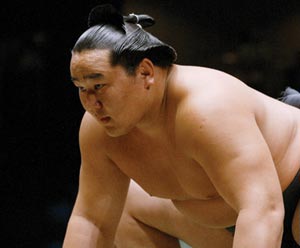I knew it would happen: Heroes is starting to get popular in Japan. This morning I turned on the TV and caught that gaijin-that-other-gaijin– love-to-hate Dave Spector (we dislike him because his Japanese is so much better than ours, and because he dyes his black hair blonde to look more “foreign” on camera, poser). He was interviewing none other than Masi Oka, the Star Wars CG-programming uber-geek with an IQ of 189, who plays the time-bending salaryman Hiro Nakamura in the NBC show. Japan is extremely sensitive to the opinions of people in the West, and any Japanese who raises the reputation of the country in the eyes of the world, such as manga-ka Shirow Masamune, baseball star Ichiro or the pop group Pizzicato Five, gets enormous street cred at home. Dave Spector seemed almost giddy as he interviewed “the most famous Japanese man in the world today” despite the fact that, you know, he’s not even Japanese. When one of Dave’s jokes fell flat, Masi calmly said, “You just made time stop for me. I think you might have super powers.” The newscasters seemed thrilled to see that the word “Yatta!” (“I did it!”) had apparently entered the English lexicon through the show.
Although the Japanese have a strong food culture, with various types of noodles, nabe (nah-beh) dishes like sukiyaki that are cooked in a central large pot in the middle of the table, and various good things from the sea like sushi and sashimi, they also embrace cuisine form the West. When we go out to dinner, we’ve got many choices, including American chains like Denny’s (which has carved a niche selling extremely traditional Japanese dishes, go figure), Italian (a dozen or more choices in a 5 km radius), and our personal favorite, Indian naan. Although famous for eating rice, which they usually consume three times a day, they’ve taken pan (bread) and adopted it into many forms beyond the normal sliced type. If you’re hungry for a snack, grab some curry-pan, baked with curry inside, or maybe some yakisoba-pan, a long roll with chow mein noodles inside. Many types of Japanese bread are sweet, which we’d consider to be something like a doughnut, like melon-pan (said to make you smarter, since it sort of looks like a shriveled brain) or cornet (a Japanese version of a French roll with chocolate cream inside, and there’s much debate about which end you should eat first). One of the most famous types of bread is is an-pan, a kind of round piece of bread containing sweet Japanese beans. Whenever I go to the bakery, I buy a loaf of French bread with camembert cheese baked inside — yum.
Japan has a famously low birthrate of about 1.29 children per female, and the country’s population is now on its way down, having officially peaked sometime in 2006. The situation is made worse than it would otherwise be by the lack of immigration into the country — while the population of the United States and Europe is augmented by new people coming in to live, the number of new foreigners in Japan doesn’t rise appreciably from year to year. In fact, I saw the other day that the population of dogs has now passed the number of children aged 10 and under, so there are now more poodles, dachunds and chihuahuas being walked by their owners in parks than kids playing there. While I’m not sure sure how serious the problem of a slowly declining population really is — it’s not like the country is going to cease functioning tomorrow or anything — it is a problem that future generations will have to deal with. Japan does do what it can to make it easy for people to come here — it’s usually possible for a foreigner to get a permanent residence visa in five or six years — but given the cultural and linguistic differences between the rest of the world, it’s unrealistic to expect immigration to turn things around. Hopefully, they’ll come up with a way to keep their race from dying out between now and the year 3000, when the number of Japanese in the world is projected to be…27.















